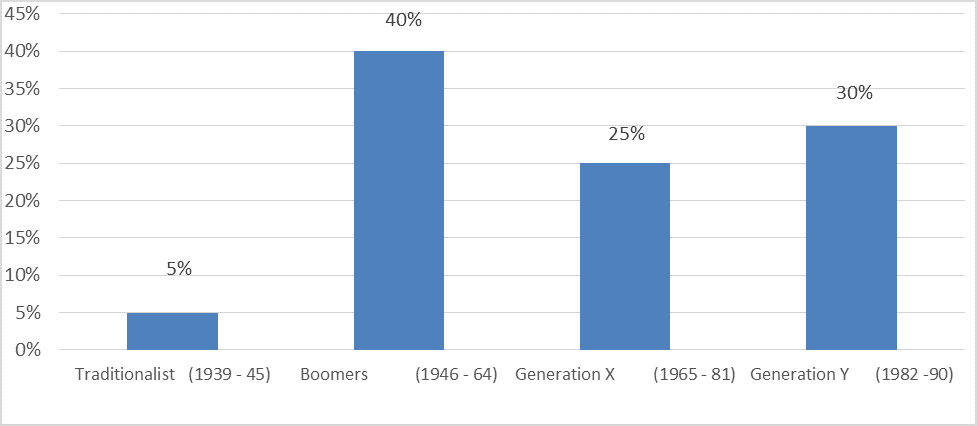
Blog
Like any good Canadian, I’ve seen my fair share of hockey games. A good portion of my younger years were spent traveling around to different arenas watching my brother’s team play, and our TV was constantly set to Hockey Night in Canada. I’ve even occasionally laced up my figure skates and grabbed a stick to play a little friendly game―although I’m much better at spinning and jumping than I am at handling a puck. That is because I was trained as a figure skater and not a hockey player.
 Even though I’m not training as a figure skater anymore, I’m still constantly training and being coached at work. The same metaphor can be applied to sales teams, where the goal―like in hockey―is to score goals to win the game. Sales reps are the players and sales managers are the coaches on the bench.
Even though I’m not training as a figure skater anymore, I’m still constantly training and being coached at work. The same metaphor can be applied to sales teams, where the goal―like in hockey―is to score goals to win the game. Sales reps are the players and sales managers are the coaches on the bench.
When we are training a new sales team or when a sales representative is transitioning into a management role it’s common to see them with their skates on and a stick in their hand trying to score goals. However this is a bit problematic. How is the manager supposed to coach the players while still on the ice trying to score the goals?
A coach’s role is to observe the players and develop a strategy to win the game; all while being sidelined on the bench. This can be difficult to accomplish―especially when managers are used to taking things into their own hands. This could be as simple as hijacking a meeting from a sales rep and taking charge instead of letting the rep take the lead to secure the sale.
So how can we transition a player to a coach and get managers to give up their skates and stick? It’s important for both parties to speak the same language, and to take the time before the meeting to go over the game plan. Managers should give coaching advice before the meeting starts and ensure both parties are on the same page during the meeting while allowing the rep to take charge.
Coming up with a game plan can be as easy as following the 8 steps of consultative selling, but all the players need to be aware of the plan and agree to follow it. Often, sales managers don’t even realize they’re interfering with their sales rep’s progress. Sometimes they believe they are helping by simply doing everything themselves. Sales coaching can help them correct this, and will help give them ease of mind when sending sales reps into meetings by themselves.
It’s the sales manager’s job to develop the skills and talent of their team, provide coaching feedback in between plays, and ultimately create an environment for their team to succeed and win. It’s the sales rep’s job to offensive and defensive strategies to score goals and win the game―all while staying out of the penalty box.
We used this analogy to help participants at a Sales Manager Coaching Workshop recently. We chose to hold the session at the arena, walked the managers out onto the ice and asked them to give up their sticks, take off their skates and put them on the bench. We then told them the only way they could win the game would be to coach their team to win. This was challenging for them, but by the end of the day they realized they did more strategizing, practicing, and coaching on plays in sports than in actual sales.
For a sales team to be effective they need an objective eye to watch the game and to report back with strategies to help score that next goal, and for a coach to be successful they need a team that listens to recommendations and puts them into action. The success of the organization depends on both players and coaches to succeed.
By Jenny Wilson
Lisa is driven by the mantra – Be Strategic. Be Pro-active. Be Brave. – and has been successfully training and coaching sales leaders and their teams to do the same for over 15 years. As the President of Teneo Results since 2003, she has trained thousands of sales professionals at more than 250 companies across North America. She transitions salespeople away from the standard “product & price” approach to having purposeful business conversations with their customers that drive results.

Blog
In this article series, our intent is to help Sales Leaders and their teams get ready for the changing Sales and Buying Demographics by the year 2020.
In previous articles on this topic we shared the major upcoming workforce changes that will have a serious impact on sales teams. Fifty percent of the workforce will be comprised of millennials by 2020. Currently, 50% of most sales teams are baby boomers (age 52+)—meaning this shift will effect more than your sales team and customers. It will be important to transition the boomer’s sales roles to the incoming millennial talent; however, before this can occur, you need to attract this age group to your sales positions.
Millennials think and work differently than Boomers and Gen X, therefore it is important to approach this dilemma with a strategy. The first thing you should do to attract and hire millennials into sales positions is rename your Sales Department and Sales Rep titles! This may seem counterproductive, but it is because college and university grads do not want to go into sales—even though 50% of marketing grads end up in a sales type position. Most millennials view sales positions negatively because they typically see them as B2C situations and not as B2B sales where selling is about understanding businesses, customer challenges, solving problems, helping customers find solutions and achieving results. All these job qualities are attractive to millennials. We just have to educate them on sales profession opportunities.
Here are 6 strategies to assist in attracting millennials.
- Be strategic when naming job titles and departments. Consider using Business Development or Client Services as the titles. Millennials are more likely to be attracted to this term over sales and sales rep classifications.
- Try to convey a sense of purpose and a connection to the brand in the job offering, as this is important to millennials. They want to be part of an organization with a larger sense of purpose. Think about how your company is helping the world and convey it through the job description. For example, Apple introduced an employee matching donation program, where it has since matched over $25 million, resulting in over $50 million in donations to various charities worldwide.
- Be the kind of leader millennials want to follow. A recent study showed Millennials place more value on strategic thinkers (39%), inspirational (37%), personable (34%) and visionary (31%) leaders and less value on visible (19%), well-networked (17%), and technically-skilled (17%) leaders. [Forbes]
- Provide an on-boarding, training and CSP Certification program—as Millennials love to learn and be educated. They want to be a part of an environment where they can grow and prosper with the organization. Additionally, this will provide them with a better understanding of their career path. Hiring millennials into customer service and marketing positions can create a career path of promotion in different sales positions.
- Allow flexibility—45% of millennials would choose workplace freedom over pay. This means working from home, flex hours, more time off and holidays mean more to them than a pay increase or larger wage. [Forbes]
- Create a mentorship program. Teaming up the younger work force with the older experienced workforce will help create collaboration and foster success. Additionally, this opportunity to share and transfer product and customer information from experienced baby boomers to aspiring millennials could become the sucession plan for retiring baby boomers.
Stay tuned for more in this series to help get your team ready for the NEW DEFINED Sales Team by 2020 with strategies and ideas to be prepared.
To learn more about the 2020 initiative attend our Evolve Event on March 31.
Lisa is driven by the mantra – Be Strategic. Be Pro-active. Be Brave. – and has been successfully training and coaching sales leaders and their teams to do the same for over 15 years. As the President of Teneo Results since 2003, she has trained thousands of sales professionals at more than 250 companies across North America. She transitions salespeople away from the standard “product & price” approach to having purposeful business conversations with their customers that drive results.

Blog
In this article series, our intent is to help Sales Leaders and their teams get ready for the Changing Sales & Buying Demographics by the year 2020.
In our first few articles we shared some major upcoming workforce changes that will have a serious impact on sales teams. Fifty percent of the workforce will be comprised of millennials by the year 2020. This presents a major challenge because many sales teams are composed largely of sales professionals aged 52 or over, and these baby boomers will want to retire in the next 3-10 years―meaning jobs will need to be filled. Many of these positions have been held by experienced sales professionals for many years. These boomers have extensive product and industry knowledge and great customer relationships. How can you ensure these opening positions are filled with skilled and qualified sales professionals? You should begin planning your succession plan now to better prepare your team―and most importantly your customers.
Here are 7 simple strategies to help you begin your succession plan:
1. Have a coaching conversation with your senior reps. You can no longer force retirement at 65 years of age according to the Canadian Human Rights Code. This means some boomers may choose not to retire until later. Even though you can’t force retirement you can ask coach-like questions to identify their goals toward retirement and to make succession planning smooth. Both parties should openly communicate their expectations moving forward, to ensure the continued success of the company.
2. Offer flexible working schedules to accommodate the boomers who may want to phase out of their position gradually. Many boomers reaching retirement age may want to continue to work, but only on a part time basis. By offering a flexible work schedule you can make this transition smoother for all involved parties.
3. Create a farm team of upcoming sales professionals to step into the roles as boomers leave them. Having a trained and prepared sales professional ready to step into the role will avoid the awkward and clunky transition from a seasoned sales professional to a new hire or transitioning worker.
4. Hire millennials into entry-level sales and marketing positions and provide them with a career pathway. By hiring millennials into your business you can help ensure the future success of your company, while ensuring the success of the next generation.
5. Mentorship is a great way to help transition sales professionals into senior roles―whether it be new hires or existing workers. Mentoring creates a support system for both incoming employees and for outgoing boomers, and it ensures company knowledge, and existing customer relationships are passed along to the incoming employee.
6. Special projects/assignments are a good way to help keep boomers involved in a transition role. These special projects could include customer relationship management, product training programs, customer service roles, marketing or inside sales.
7. Be sure the candidate taking over has the correct temperament for the position. If you are promoting from within, be sure that the position change is welcomed by them, and that their temperament is suited for the job in need of filling. Often, the top-salespeople are promoted to managerial positions but they are not suited for office work and find it stifling.
It is important that soon-to-retire boomers retain a sense of importance within the company, and these strategies can help accomplish this, while training another sales professional to occupy the soon-to-be-vacant position.
During the next few months, stay tuned for a series of articles on how YOU can get your team ready for the NEW DEFINED Sales Team by 2020 with strategies and ideas to get ready for 2020:
More statistics on Boomer succession plans can be found here.
Join us on March 31 at Burlington Golf & Country Club to learn more about the 2020 initiative. Find more information here.
Lisa is driven by the mantra – Be Strategic. Be Pro-active. Be Brave. – and has been successfully training and coaching sales leaders and their teams to do the same for over 15 years. As the President of Teneo Results since 2003, she has trained thousands of sales professionals at more than 250 companies across North America. She transitions salespeople away from the standard “product & price” approach to having purposeful business conversations with their customers that drive results.

Blog
During the month of January, we had the opportunity to kick off a few sales conferences for our clients. Two of the clients, had record growth and were celebrating their sales successes. The CEO (one from the Americas) kicked off their sales conference with a congratulatory message, “Canada―you had the highest sales growth of all our global countries―way to go! Congratulations.” In the very next breath he continued, “Canada―I need you to pick up the pace! In order to achieve our ambitious 3-year sales goal I’ll need your help.” You could feel the exhaustion and excitement ripple through the air. Just like many other sales people―and even myself―many sales professionals gave it their absolute all the past year, and they were very proud…but they were exhausted! Now they were being told they had to do it all again, and then some.
Most companies are looking for double digit growth in the next five years to double their overall sales. This seems shocking and many of you may be wondering how you’ll ever achieve such an ambitious goal without sacrificing your sanity. The New Year is like resetting to zero, but expecting an even higher level result. You may have just jumped higher than ever before, but now you have to go even higher. It is possible! Here’s my challenge to you: Achieve 10% more, but work 10% less. I know, it sounds unrealistic but I have some tools to help you out. Jill Konrath’s new book, Sell More, Work Less, is a great guide to help get you started. Jill shares her own personal stories on how she challenged herself to identify what her biggest distractions, procrastinations, and goals were. Chapter by chapter she identifies these elements and in doing so helps prioritize her time more effectively. I highly recommend this book for anyone who wants to increase their productivity all while working less.
Here are 3 strategies and personal examples to help you Work Smarter, Play Harder, and Celebrate more this year…
- Work Smarter
- Make use of time blocking. I am so much more productive when I time block my day. I turn off my emails, texts, social media and I’m amazed at how quickly I can get a project done or get 10 prospecting calls in when I don’t let anything distract me. I also utilize the concept of ROTI (Return on Time Invested). In this 1st quarter, I’m focusing on the top 10 clients who will contribute to my sales goal. This helps me stay organized and prioritize my time accordingly. When I’m meeting with clients I apply the 8-step consultative process to have meaningful business conversations in order to learn all I can about their business. This helps keep our conversations focused, mutually beneficial and ensures we’re both on the same page, working towards both our business goals.
- Play Harder
- It’s important for us to have something to help turn off work and do something for ourselves. I’ve signed up for the Team BeachBody On Demand videos―30 minute workout videos that make me work hard, but in a time that’s manageable. They’re tough but I feel so good afterwards. I’m committed to having a stronger and fitter body when turning 50 this year. Even if your idea of playing isn’t working out, you can still up the ante in whatever you do enjoy. Make a commitment and stick with it!
- Celebrate More
- Our team has already mapped out our holiday/vacation schedule for the year to enjoy and celebrate with long weekends and great trips. Another colleague shared that her office will close every long weekend on Friday at 1pm to celebrate more. Remembering to celebrate is a great way to keep motivated. What will you do to celebrate more for achieving your quarterly goals throughout the year?
Although the notion of working smarter, playing harder and celebrating more may seem idealistic it’s all about perspective. Staying positive, managing time, and being strategic are key to achieving this trifecta. What will you do to achieve 10% more and work 10% less???
Lisa is driven by the mantra – Be Strategic. Be Pro-active. Be Brave. – and has been successfully training and coaching sales leaders and their teams to do the same for over 15 years. As the President of Teneo Results since 2003, she has trained thousands of sales professionals at more than 250 companies across North America. She transitions salespeople away from the standard “product & price” approach to having purposeful business conversations with their customers that drive results.

Blog
By the year 2020 almost half of the Canadian workforce will be comprised of millennials – what does this mean for you and your organization?
Because of this workforce shift, the business landscape will change dramatically and the way customers and companies buy and sell is bound to evolve. Creating the optimal sales team and culture that will transition seamlessly into 2020 is quickly becoming a priority for industry leaders and companies. The challenge that most companies are facing is the new complex social and organizational demographic differences on their sales teams.
Ask yourself: Of your sales team, what percentage are Baby Boomers or over the age of 50? What percentage of your sales team are under the age of 35, Millennials?
The response we typically hear is that currently, around 50% of sales teams are Baby Boomers and less than 10% are Millennials. By 2020, 50% of the workforce will be Millennials. This means that Baby Boomers will be selling to a market half-comprised of Millennials. Are you prepared for the impact this will have on your sales team and more importantly, your customers?
Understanding the current workforce – according to Statistics Canada

- Currently, Baby Boomers make up 40% of today’s workplace demographics. They hold many senior positions and have had a strong influence over the cultural characteristics of the workplace. This generation places high value on long work hours, relationships and face-to-face meetings.
- Generation X holds 25% of the workplace demographics. This generation is not a fan of status or titles and seeks work-life balance in an informative, fun work environment.
- Generation Y or Millennials represent 30% of the workforce with pre-set expectations of what they want in their jobs. Millennials are innovative, tech-savvy, self-sufficient, entrepreneurial collaborators who need a higher purpose in life.

Love them or hate them Millennials are here to stay, and in order to take action, you should ask:
- How will this shift in demographics impact your sales teams?
- How will this affect your customers preferred buying preferences?
- How will you create a succession plan with your retiring Baby Boomers who have a wealth of company and product knowledge, long term relationships with customers, and hard-working ethics?
- Finally, how will you attract and engage Millennials to your sales team? The traditional sales team will no longer be a relevant model!
Here are 5 key action plan strategies that will help you and your team evolve into 2020:
- Create awareness and action within your company – COACH up, down and around to get everyone to help you define the new sales team – your CEO, HR and other key departments.
- Create a Succession Plan for Retiring Baby Boomers
- Attract, Hire & On-Board Millennials into Sales Positions
- Adapt to sell to Millennial Buyers
- Build the case – Why Millennials would be perfect for the New Defined Sales Team
During the next few months, stay tuned for a series of articles on how YOU can get your team ready for the NEW DEFINED Sales Team by 2020.
Lisa is driven by the mantra – Be Strategic. Be Pro-active. Be Brave. – and has been successfully training and coaching sales leaders and their teams to do the same for over 15 years. As the President of Teneo Results since 2003, she has trained thousands of sales professionals at more than 250 companies across North America. She transitions salespeople away from the standard “product & price” approach to having purposeful business conversations with their customers that drive results.

 Even though I’m not training as a figure skater anymore, I’m still constantly training and being coached at work. The same metaphor can be applied to sales teams, where the goal―like in hockey―is to score goals to win the game. Sales reps are the players and sales managers are the coaches on the bench.
Even though I’m not training as a figure skater anymore, I’m still constantly training and being coached at work. The same metaphor can be applied to sales teams, where the goal―like in hockey―is to score goals to win the game. Sales reps are the players and sales managers are the coaches on the bench.








